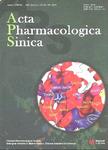Anticancer activity of sodium caffeate and its mechanism
Anticancer activity of sodium caffeate and its mechanism作者机构:Department of Pharmacology Zhujiang Hospital Southern Medical University Guangzhou China Department of Oncology Institute of Medicinal Biotechnology Chinese Academy of Medical Sciences and Peking Union Medical College Beijing China
出 版 物:《Acta Pharmacologica Sinica》 (中国药理学报(英文版))
年 卷 期:2005年第26卷第10期
页 面:1248-1252页
核心收录:
学科分类:1007[医学-药学(可授医学、理学学位)] 1006[医学-中西医结合] 100706[医学-药理学] 1002[医学-临床医学] 100214[医学-肿瘤学] 100602[医学-中西医结合临床] 10[医学]
基 金:Project supported by the National Key Basic Research Development Program of China(№ 2002CB513108)
主 题:caffeic acid anticancer activity cell division cell apoptosis cell cycle phytogenic antineoplastic agent flow cytometry Western blotting
摘 要:Aim: To study the anticancer activity of sodium caffeate (SC). Methods: A nucleoside transport assay was used to analyze the inhibitory effects of SC on nucleoside rescue. The MTT assay was used to measure cell proliferation. Flow cytometrywas used to measure the apoptosis of BEC-7402 induced by SC and the cell cycledistribution change. Western blotting analysis was employed to investigate Bcl2, caspase and Bax expression. Intracellular Ca2+and mitochondrial membranepotential were determined by flow cytometry. In vivo anti-tumor activity wasmeasured using a tumor transplantation model in mice. Results: SC inhibited thenucleoside transport of BEL-7402 cells with an IC50of 1.02 mg/mL. SC inhibitedtumor cell proliferation with an IC50between 100 μg/mL and 200μg/mL. SC induced BEL-7402 cell apoptosis in a time-and dose-dependent manner, which wasinduced by arresting cells in S phase. The in vivo study showed that tumorgrowth was inhibited in a dose-dependent manner. Activated caspase-3 and Baxexpression were up-regulated after treatment with SC, while Bcl-2 expression wasdown-regulated. Intracellular Ca2+was increased while mitochondrial membranepotential was decreased by SC. Conclusion: SC is a new anticancer agent withpromising potential.



